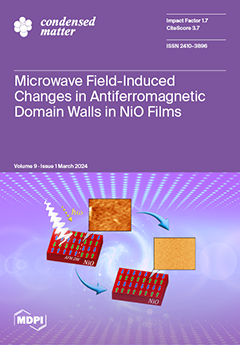Open AccessFeature PaperArticle
X-ray Technologies for Astrophysics Missions Supported by the Italian Space Agency
by
Marco Miliucci, Angela Volpe, Sergio Fabiani, Marco Feroci, Luca Latronico, Claudio Macculi, Luigi Piro, Matteo D’Andrea, Flavio Gatti, Simonetta Puccetti, Paolo Soffitta and Elisabetta Cavazzuti
Cited by 1 | Viewed by 2810
Abstract
The Italian Space Agency plays a key role in the fulfillment of space missions, contributing to the scientific, technological and economic progress in Italy. The agency accomplishes space experiments by collaborating with scientific and industrial entities, supporting them in the realization of new
[...] Read more.
The Italian Space Agency plays a key role in the fulfillment of space missions, contributing to the scientific, technological and economic progress in Italy. The agency accomplishes space experiments by collaborating with scientific and industrial entities, supporting them in the realization of new projects able to achieve, over the last two decades, unprecedented results and obtention of fundamental information on the birth and evolution of the universe. The paper describes a selection of X-ray technologies developed by the synergy between the Italian Space Agency and its principal collaborators which contributed to the main scientific results achieved over the years, together with the latest advances addressed to the next astrophysics missions.
Full article
►▼
Show Figures





